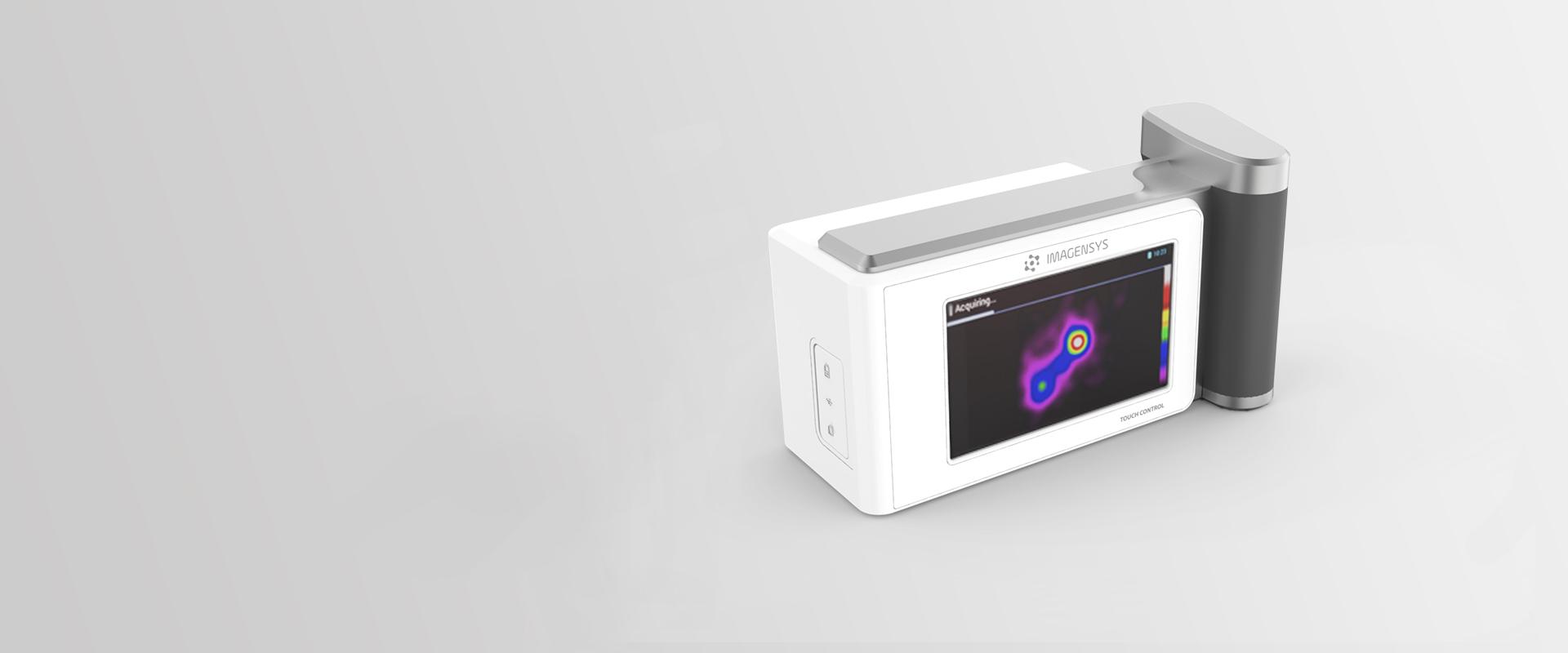Imagensys is a highly specialised, Italian medical tech company producing advanced imagery equipment used in cancer diagnosis, follow-up and surgery.
In this field, gamma ray cameras are extremely effective at detecting developing cancers in patients. Due to the high metabolic activity of cancer cells, when the patient is injected with a radioactive contrast medium, tumour masses emit gamma rays that can be precisely spotted by the device. Similarly, gamma ray probes can greatly help surgeons during cancer operations by directing them with great precision.
Studio Volpi’s task was to help Imagensys perfect the engineering and the design of both a Gamma Ray handheld camera for diagnostics, and a 3-detector probe, and its table-top control unit, for radio-guided surgery.
Portable devices, that can be easily wielded by physicians during regular checks, or used in the operating theatre to guide surgeons, have become a crucial instrument in the battle against cancer.

Creating the best ergonomics
Designers at Studio Volpi concentrated on the ergonomics of the devices for a comfortable and secure grip, ensuring maximum efficiency. The portable handheld camera, despite its small dimensions, was quite heavy due to the lead screening used to contain gamma radiation, so particular attention was given to the shape and angle of the grip. This in order to allow operators to smoothly and easily scan any part of the patients’ bodies, whatever their position.
Several polystyrene foam mock-ups were built and tested internally at the Studio. The best designs were then shared with the client for further testing with real end-users: the doctors who would eventually use the device on their patients.

The tests were conducted with ballasted, adjustable mock-ups in order to reproduce real operating conditions. The ideal design was then selected for best and most comfortable handling over extended periods of time.
Designers also gave the device a forward-tech, sleek and professional look that reflected the client’s identity and pioneering spirit.

For the 3-detector probe, ergonomics and anatomical considerations were even more important, since part of the device was to be inserted inside patients’ bodies during delicate, life-saving surgical procedures. Functionality was here the principal focus, yet the final product featured definitely modernised aesthetics.

One of the main challenges in designing both the probe and the camera was the fitting of the electronic components into casings that needed to be as compact as possible.

The central unit connected to the manual probe left more of a free hand to the Studio’s designers, who were able to give it an appealing clean look. The tablet-like display was mated to a table-top stand and encased into a hull that featured a handy ridge for one-handed handling and positioning. The angle at which the tablet stood was calculated for best visibility by the operator while at the surgical table, as the screen’s function was to guide the surgeons towards the tumour cells.
When multidisciplinary engineering competences
make the difference
Studio Volpi’s multidisciplinary team approached the project from different perspectives. From a materials’ point of view, an alternative solution was found to the excessively heavy lead screening. Moreover, lead is notoriously toxic. Tungsten-based polymers and sintered tungsten powder, offering the same level of protection, were suggested to lower the overall weight of the camera to 700g and provide non-toxic screening components.

Medical grade materials were employed for all product parts, including for the prototypes that needed to be validated under the very stringent procedures relating to medical devices.
Again, Studio Volpi’s extensive expertise in materials science helped to quickly find and implement the most effective solutions and produce the most suitable prototypes, even in a very limited series.

Working together with the client’s electronics supplier, Elemaster, the Studio managed to engineer all the tech components into the extremely compact design of the devices. Special consideration was also given to the final industrialisation phase of the products, in particular under the aspects of feasibility and costs.

Combining science, engineering and design to save lives
In the case of the Imagensys project, the client’s specialist expertise and technology advances in diagnosing and treating a life-threatening condition, was successfully supported by the Studio’s extensive experience in design, materials sciences and engineering. A winning combination that resulted in ready-to-market, beautiful and incredibly effective instruments, for the benefit of all cancer patients, to our greatest satisfaction and pride.






